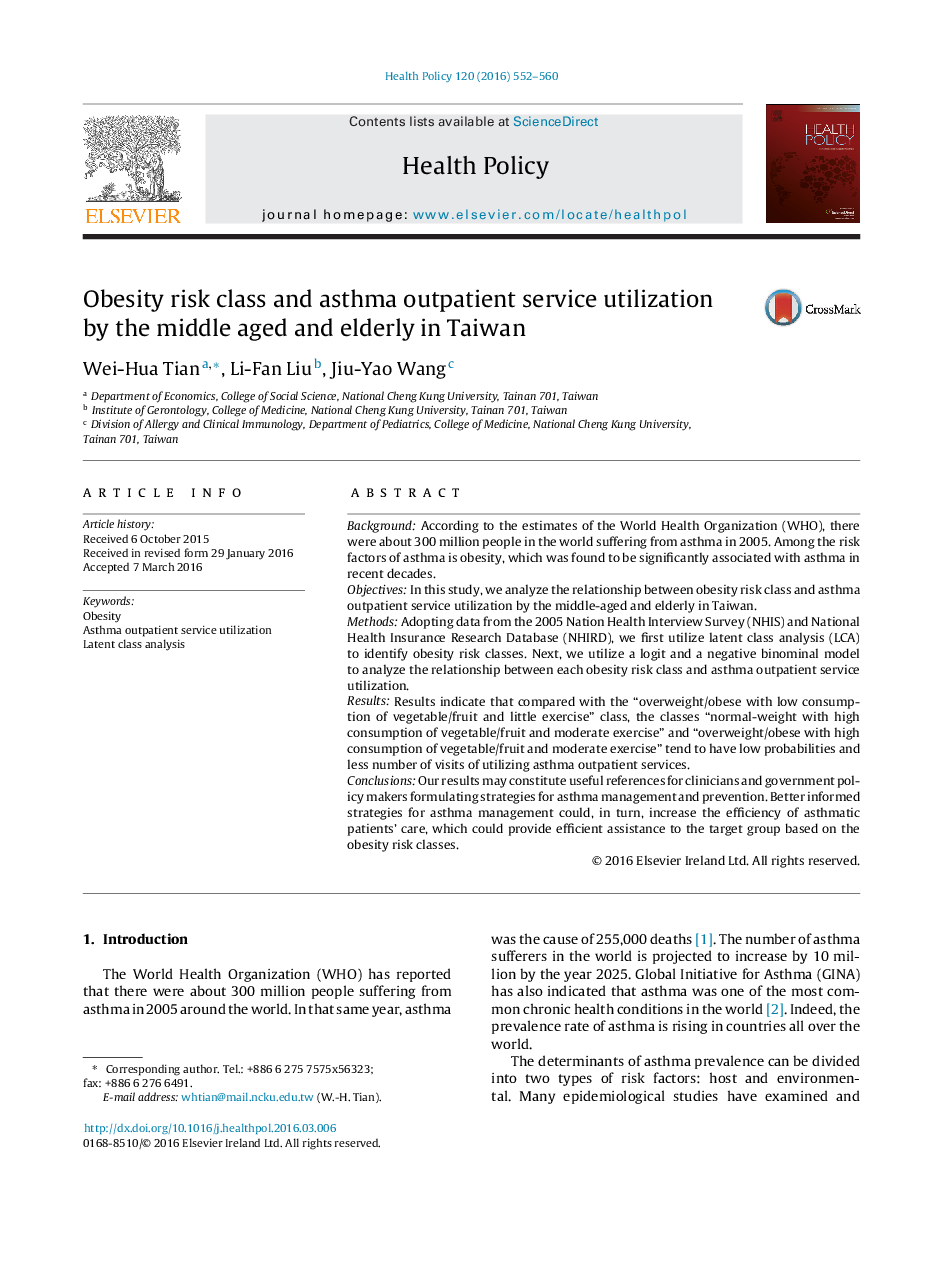| Article ID | Journal | Published Year | Pages | File Type |
|---|---|---|---|---|
| 6238974 | Health Policy | 2016 | 9 Pages |
â¢We analyze the relationship between obesity risk class and asthma outpatient utilization.â¢We first utilize latent class analysis (LCA) to identify obesity risk classes.â¢We further analyze the relationship between obesity risk classes and asthma.â¢Normal-weight with high vegetable/fruit consumption and moderate exercise class has lower utilization.â¢Overweight/obese with high vegetable/fruit consumption and moderate exercise class has lower utilization.
BackgroundAccording to the estimates of the World Health Organization (WHO), there were about 300 million people in the world suffering from asthma in 2005. Among the risk factors of asthma is obesity, which was found to be significantly associated with asthma in recent decades.ObjectivesIn this study, we analyze the relationship between obesity risk class and asthma outpatient service utilization by the middle-aged and elderly in Taiwan.MethodsAdopting data from the 2005 Nation Health Interview Survey (NHIS) and National Health Insurance Research Database (NHIRD), we first utilize latent class analysis (LCA) to identify obesity risk classes. Next, we utilize a logit and a negative binominal model to analyze the relationship between each obesity risk class and asthma outpatient service utilization.ResultsResults indicate that compared with the “overweight/obese with low consumption of vegetable/fruit and little exercise” class, the classes “normal-weight with high consumption of vegetable/fruit and moderate exercise” and “overweight/obese with high consumption of vegetable/fruit and moderate exercise” tend to have low probabilities and less number of visits of utilizing asthma outpatient services.ConclusionsOur results may constitute useful references for clinicians and government policy makers formulating strategies for asthma management and prevention. Better informed strategies for asthma management could, in turn, increase the efficiency of asthmatic patients' care, which could provide efficient assistance to the target group based on the obesity risk classes.
